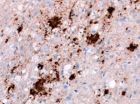(Press-News.org) Results of a new trial of treatments for chronic whiplash pain, published in The Lancet, suggest that expensive, intense physiotherapy sessions do not show any additional benefit over a single physiotherapy session of education and advice with phone follow-up.
The findings are in line with previous studies on the subject, which have reported minimal additional benefit of longer physiotherapy programmes over briefer physiotherapy programmes for acute whiplash-associated disorders. The current study supports those claims, finding that while intensive physiotherapy has remained the recommended intervention, a briefer programme encouraging self-management might be equally effective.*
Study participants were solicited in Sydney and Brisbane, Australia, through advertisements in local newspapers, radio, and online, and via referral from a statutory authority set up to monitor motor vehicle and personal injury insurance plans.
The study included participants who had suffered a motor vehicle accident resulting in chronic whiplash, recruiting patients whose accident occurred no sooner than three months prior to signing up to the study, and no later than five years after the accident. Patients were enrolled between September 2009 and February 2012.
A total of 172 people were enrolled into the study, with participants randomly divided into two groups. The advice group received a single half-hour consultation with a trained physiotherapist who went over a pamphlet that provided information on whiplash-related disorders, suggestions on how to self-manage pain, and a simple exercise routine. Participants assigned to this group could have two additional phone consultations with the physiotherapists if desired.
Study participants included in the exercise group received a more complex treatment, including twenty individually tailored physiotherapy sessions lasting one hour each, over the course of twelve weeks. These sessions included a comprehensive exercise programme, posture re-education, stretching training and exercises, scapular training, aerobic exercise, and strength training.
The primary outcome of the study, in which the authors had expected to see a difference between groups of patients, was reduction in pain reported during the previous week, measured at 14 weeks, six months, and 12 months after the intervention. Secondary outcomes included pain during the previous twenty four hours, self-reported recovery, and an improvement in flexibility. However, no clinically meaningful differences were reported between groups for either primary or secondary outcomes during any of the reporting periods.
According to study author Dr Zoe Michaleff, of The University of Sydney, Australia, "Musculoskeletal disorders are one of the leading causes of disability and chronic pain globally. The need to identify effective and affordable strategies to prevent and treat musculoskeletal disorders should be an important health priority. This is especially true for those with chronic whiplash-associated disorders because most patients have tried and failed previous treatments, and their continuing symptoms mean they would be unlikely to pursue more of the same approaches. The need for an extended course of treatment for whiplash-associated disorders is being challenged, and our study provides further evidence that prolonged expensive clinical interventions for chronic whiplash injury are no more effective than briefer treatment programs that teach the patient how to self-manage their pain."**
Writing in a linked Comment, Jo Nijs and Kelly Ickmans, of Vrije Universiteit Brussel, in Brussels, Belgium, said, "The study by Michaleff and colleagues advances our understanding of whiplash-associated disorders and provides physiotherapists with clear information about how to treat patients with chronic whiplash-associated disorders. These findings should not be interpreted as encouragement to abandon exercise therapy in these patients: the question is how and when to exercise people with chronic whiplash-associated disorders."
INFORMATION:
NOTES TO EDITORS:
The study was funded by The National Health and Medical Research Council of Australia, Motor Accidents Authority of New South Wales, and Motor Accident Insurance Commission of Queensland.
*Exercise based interventions are recommended by leading whiplash guidelines worldwide. The UK NICE guidelines specifically cite physiotherapy as a possible treatment option and the Australian NHMRC/TracSA guidelines recommend treatments such as exercise for whiplash. Other professional guidelines, eg, physiotherapy and chiropractic guidelines of Canada and the USA, also recommend the use of exercise to treat whiplash associated disorders.
**Quote direct from author and cannot be found in text of Article.
Intense treatment no better than advice & exercise at reducing pain from chronic whiplash
2014-04-04
ELSE PRESS RELEASES FROM THIS DATE:
What bank voles can teach us about prion disease transmission and neurodegeneration
2014-04-04
When cannibals ate brains of people who died from prion disease, many of them fell ill with the fatal neurodegenerative disease as well. Likewise, when cows were fed protein contaminated with bovine prions, many of them developed mad cow disease. On the other hand, transmission of prions between species, for example from cows, sheep, or deer to humans, is—fortunately—inefficient, and only a small proportion of exposed recipients become sick within their lifetimes.
A study published on April 3rd in PLOS Pathogens takes a close look at one exception to this rule: bank ...
Poor quality of life may contribute to kidney disease patients' health problems
2014-04-04
Washington, DC (April 3, 2014) — Kidney disease patients with poor quality of life are at increased risk of experiencing progression of their disease and of developing heart problems, according to a study appearing in an upcoming issue of the Journal of the American Society of Nephrology (JASN). The findings suggest that quality of life measurements may have important prognostic value in these individuals.
Approximately 60 million people globally have chronic kidney disease (CKD). Quality of life has been well-studied in patients with end-stage kidney disease, but not ...
Walking may help protect kidney patients against heart disease and infections
2014-04-04
Washington, DC (April 3, 2014) — Just a modest amount of exercise may help reduce kidney disease patients' risks of developing heart disease and infections, according to a study appearing in an upcoming issue of the Journal of the American Society of Nephrology (JASN).
Heart disease and infection are major complications and the leading causes of death in patients with chronic kidney disease. It is now well established that immune system dysfunction is involved in both of these pathological processes. Specifically, impaired immune function predisposes to infection, while ...
Insomnia may significantly increase stroke risk
2014-04-03
The risk of stroke may be much higher in people with insomnia compared to those who don't have trouble sleeping, according to new research in the American Heart Association journal Stroke.
The risk also seems to be far greater when insomnia occurs as a young adult compared to those who are older, said researchers who reviewed the randomly-selected health records of more than 21,000 people with insomnia and 64,000 non-insomniacs in Taiwan.
They found:
Insomnia raised the likelihood of subsequent hospitalization for stroke by 54 percent over four years.
The incidence ...
Higher total folate intake may be associated with lower risk of exfoliation glaucoma
2014-04-03
BOSTON (April 4, 2014) — Exfoliation glaucoma (EG), caused by exfoliation syndrome, a condition in which white clumps of fibrillar material form in the eye, is the most common cause of secondary open-angle glaucoma and a leading cause of blindness and visual impairment. Effective strategies for preventing this disease are lacking.
Elevated homocysteine, which may enhance exfoliation material formation, is one possible risk factor that has received significant research attention. Research studies demonstrate that high intake of vitamin B6, vitamin B12 and folate ...
Off the shelf, on the skin: Stick-on electronic patches for health monitoring
2014-04-03
CHAMPAIGN, Ill. — Wearing a fitness tracker on your wrist or clipped to your belt is so 2013.
Engineers at the University of Illinois at Urbana-Champaign and Northwestern University have demonstrated thin, soft stick-on patches that stretch and move with the skin and incorporate commercial, off-the-shelf chip-based electronics for sophisticated wireless health monitoring.
The patches stick to the skin like a temporary tattoo and incorporate a unique microfluidic construction with wires folded like origami to allow the patch to bend and flex without being constrained ...
Geology spans the minute and gigantic, from skeletonized leaves in China to water on mars
2014-04-03
Boulder, Colo., USA – New Geology studies include a mid-Cretaceous greenhouse world; the Vredefort meteoric impact event and the Vredefort dome, South Africa; shallow creeping faults in Italy; a global sink for immense amounts of water on Mars; the Funeral Mountains, USA; insect-mediated skeletonization of fern leaves in China; first-ever tectonic geomorphology study in Bhutan; the Ethiopian Large Igneous Province; the Central Andean Plateau; the Scandinavian Ice Sheet; the India-Asia collision zone; the Snake River Plain; and northeast Brazil.
Highlights are provided ...
Calcium waves help the roots tell the shoots
2014-04-03
MADISON – For Simon Gilroy, sometimes seeing is believing. In this case, it was seeing the wave of calcium sweep root-to-shoot in the plants the University of Wisconsin-Madison professor of botany is studying that made him a believer.
Gilroy and colleagues, in a March 24, 2014 paper in the Proceedings of the National Academy of Sciences, showed what long had been suspected but long had eluded scientists: that calcium is involved in rapid plant cell communication.
It's a finding that has implications for those interested in how plants adapt to and thrive in changing ...
Smoking may dull obese women's ability to taste fat and sugar
2014-04-03
Cigarette smoking among obese women appears to interfere with their ability to taste fats and sweets, a new study shows. Despite craving high-fat, sugary foods, these women were less likely than others to perceive these tastes, which may drive them to consume more calories.
M. Yanina Pepino, PhD, assistant professor of medicine at Washington University School of Medicine in St. Louis, and Julie Mennella, PhD, a biopsychologist at the Monell Center in Philadelphia, where the research was conducted, studied four groups of women ages 21 to 41: obese smokers, obese nonsmokers, ...
Dose-escalated hypofractionated IMRT, conventional IMRT for prostate cancer have like side effects
2014-04-03
Fairfax, Va., April 3, 2014—Dose-escalated intensity modulated radiation therapy (IMRT) with use of a moderate hypofractionation regimen (72 Gy in 2.4 Gy fractions) can safely treat patients with localized prostate cancer with limited grade 2 or 3 late toxicity, according to a study published in the April 1, 2014 edition of the International Journal of Radiation Oncology · Biology · Physics (Red Journal), the official scientific journal of the American Society for Radiation Oncology (ASTRO).
Previous randomized clinical trials have shown that dose-escalated ...



